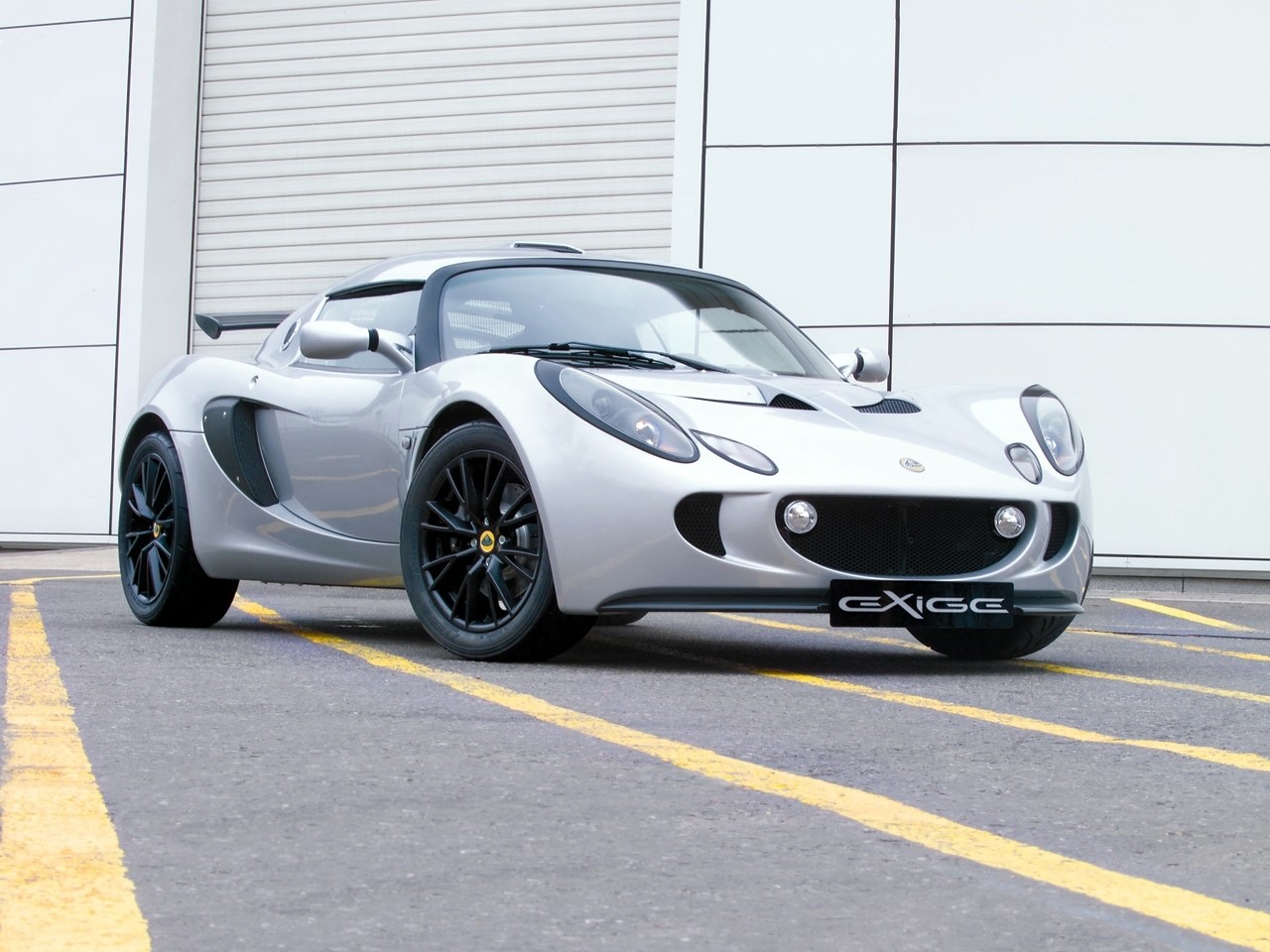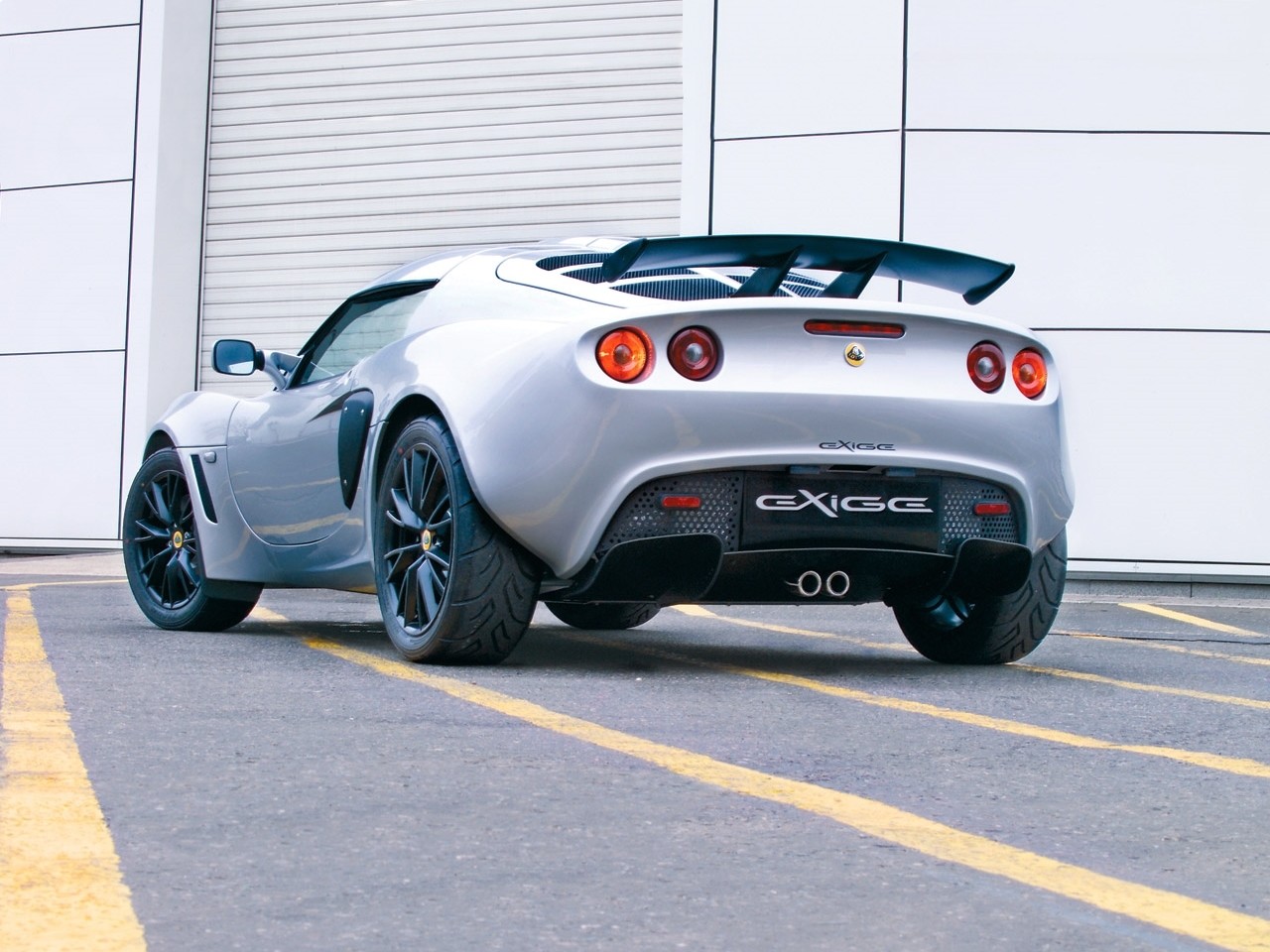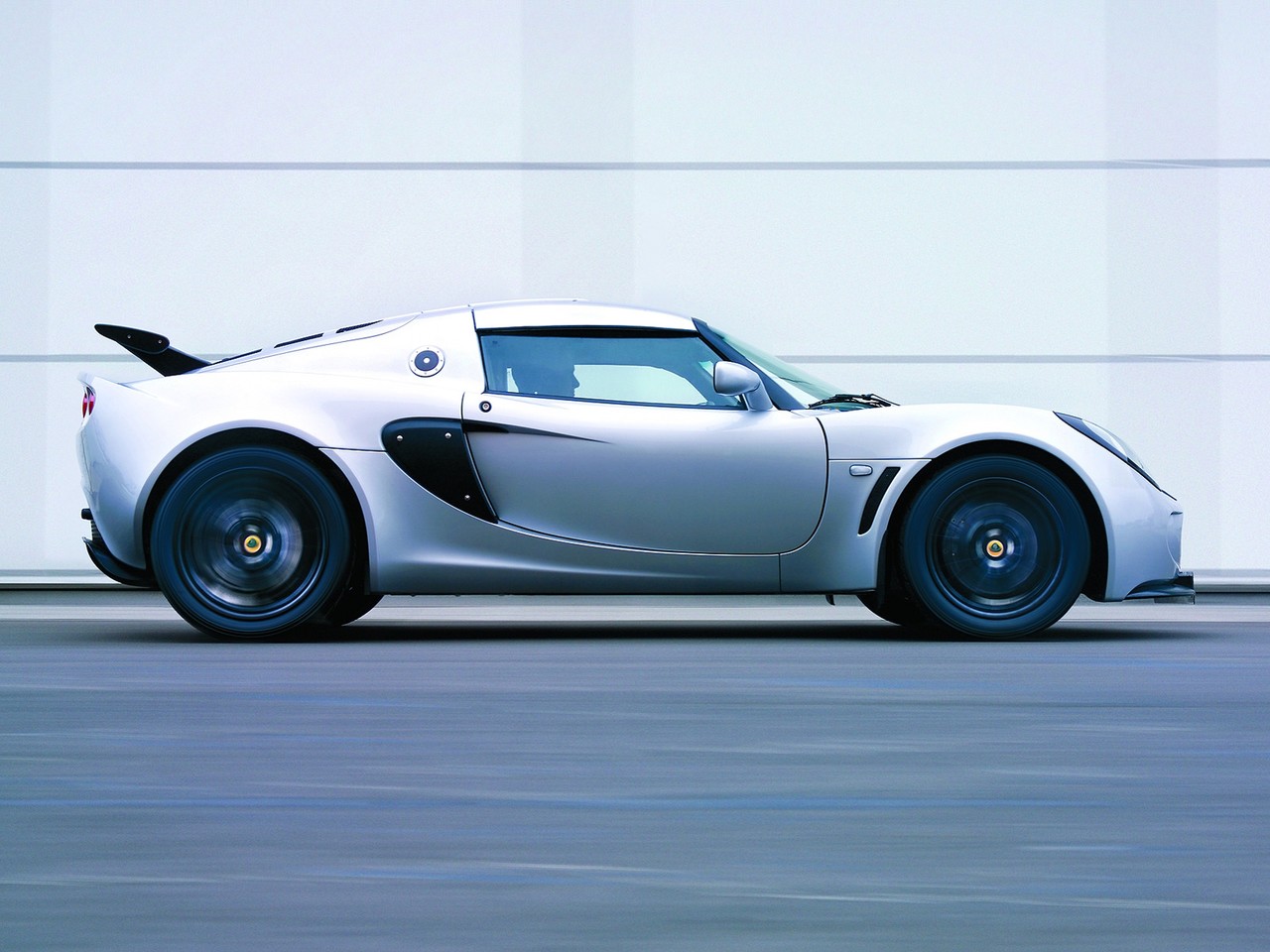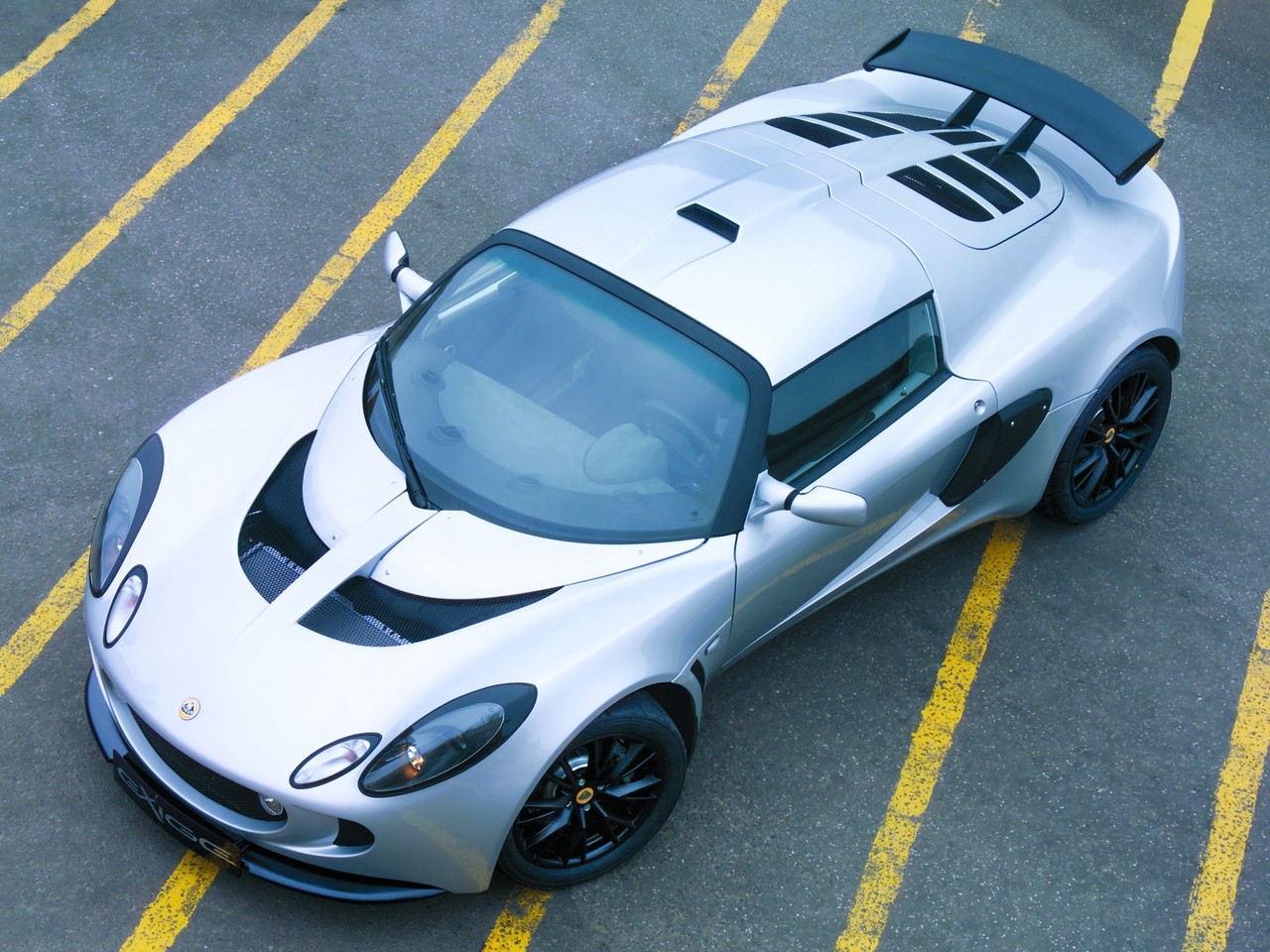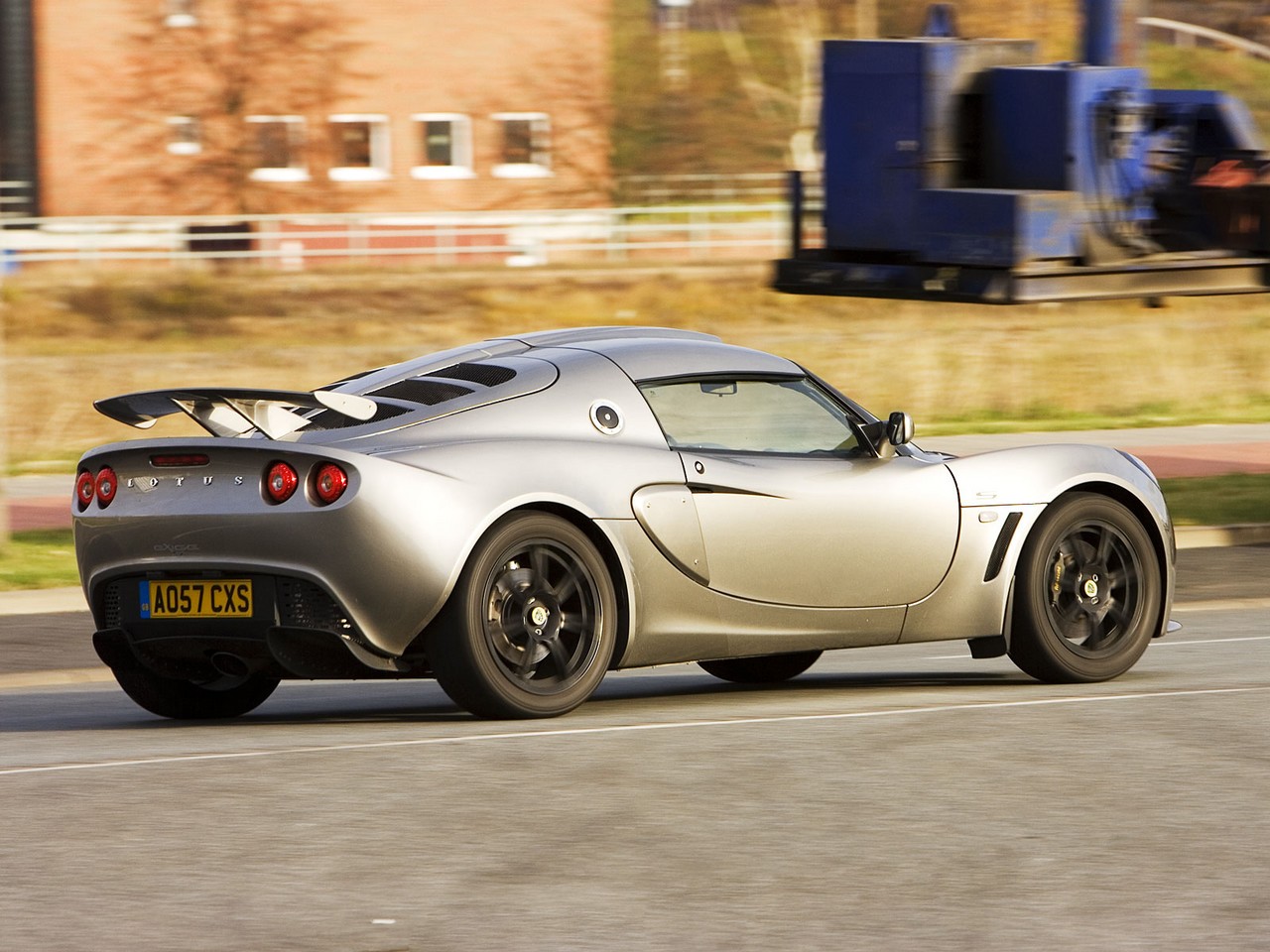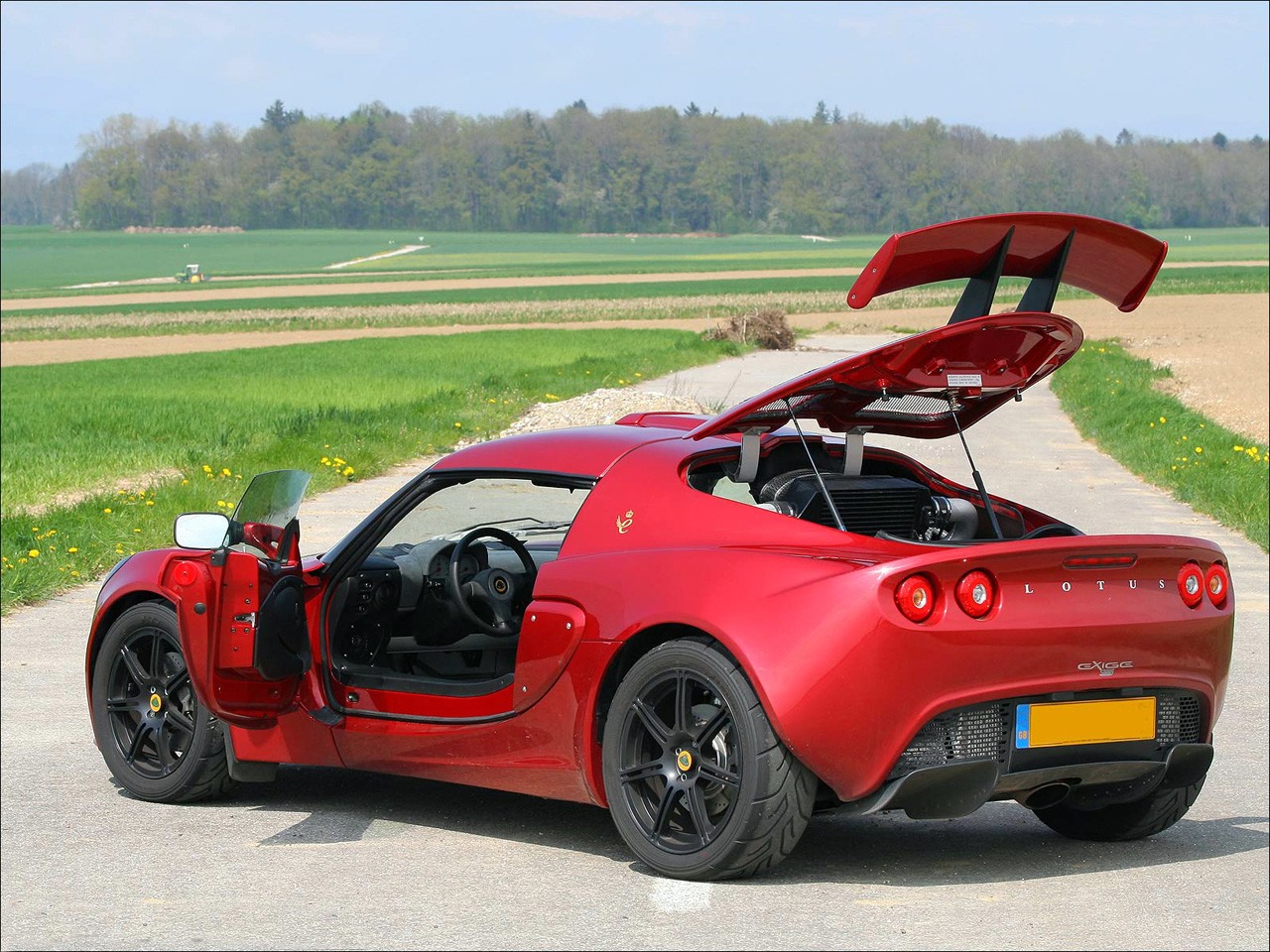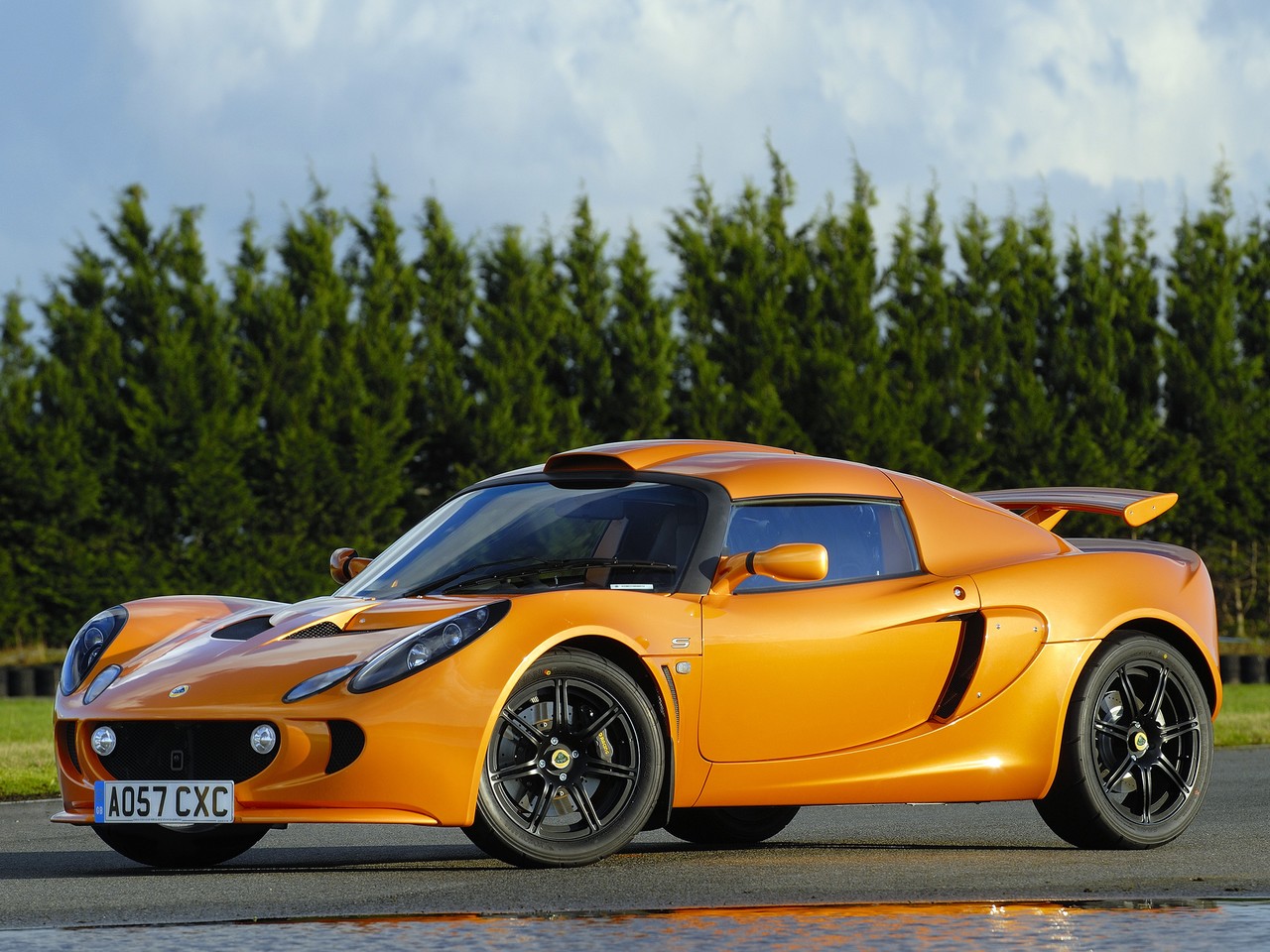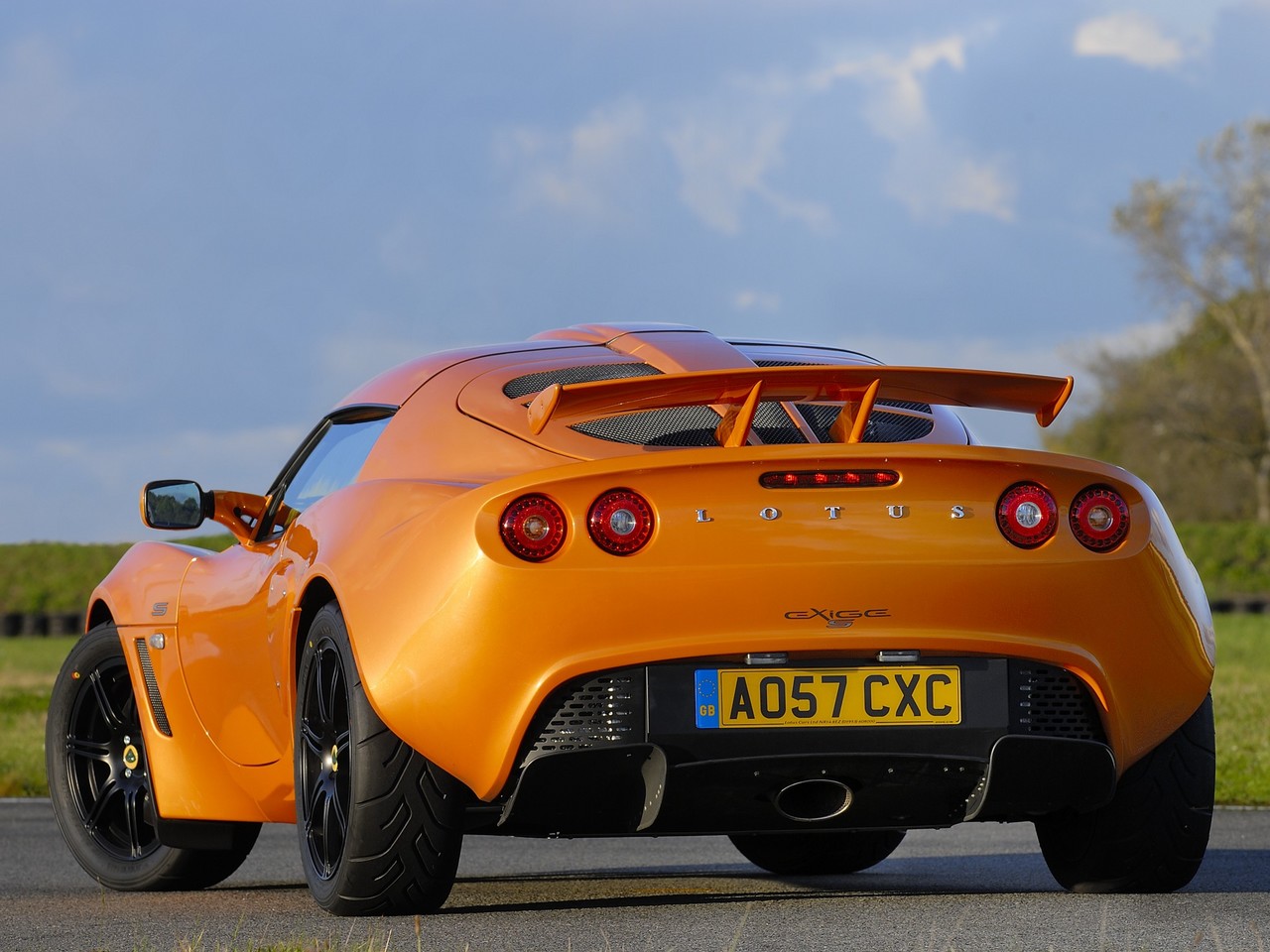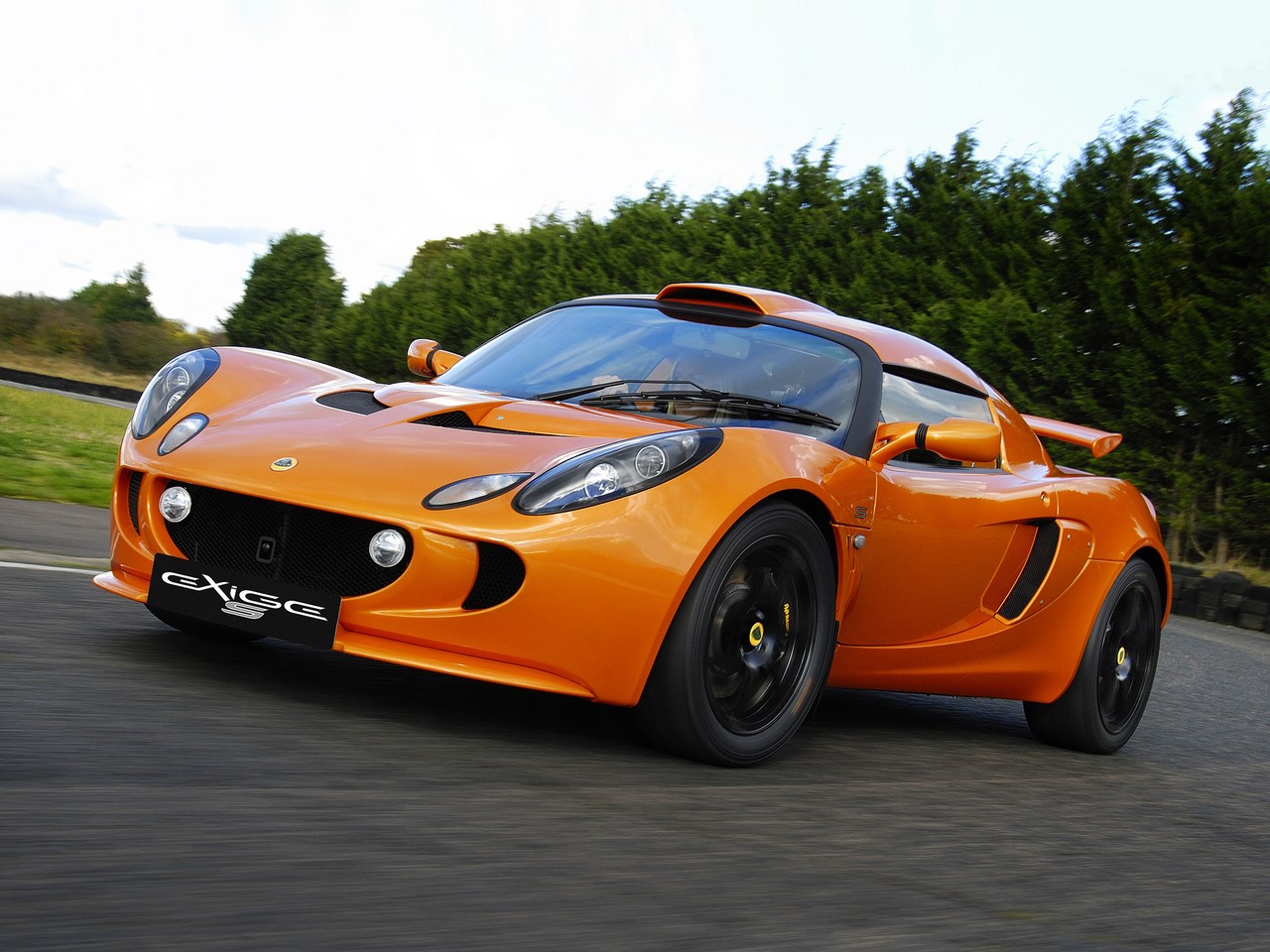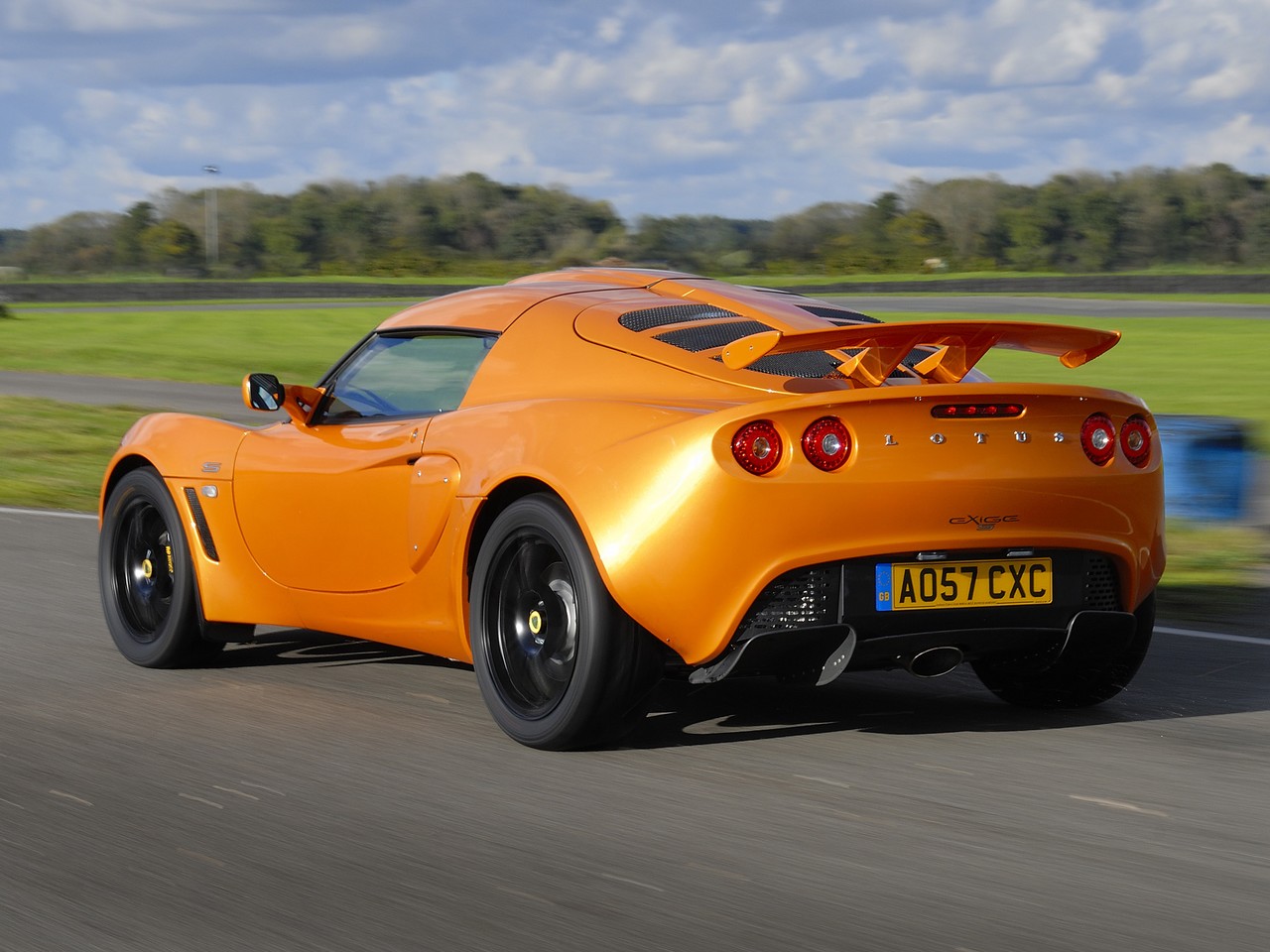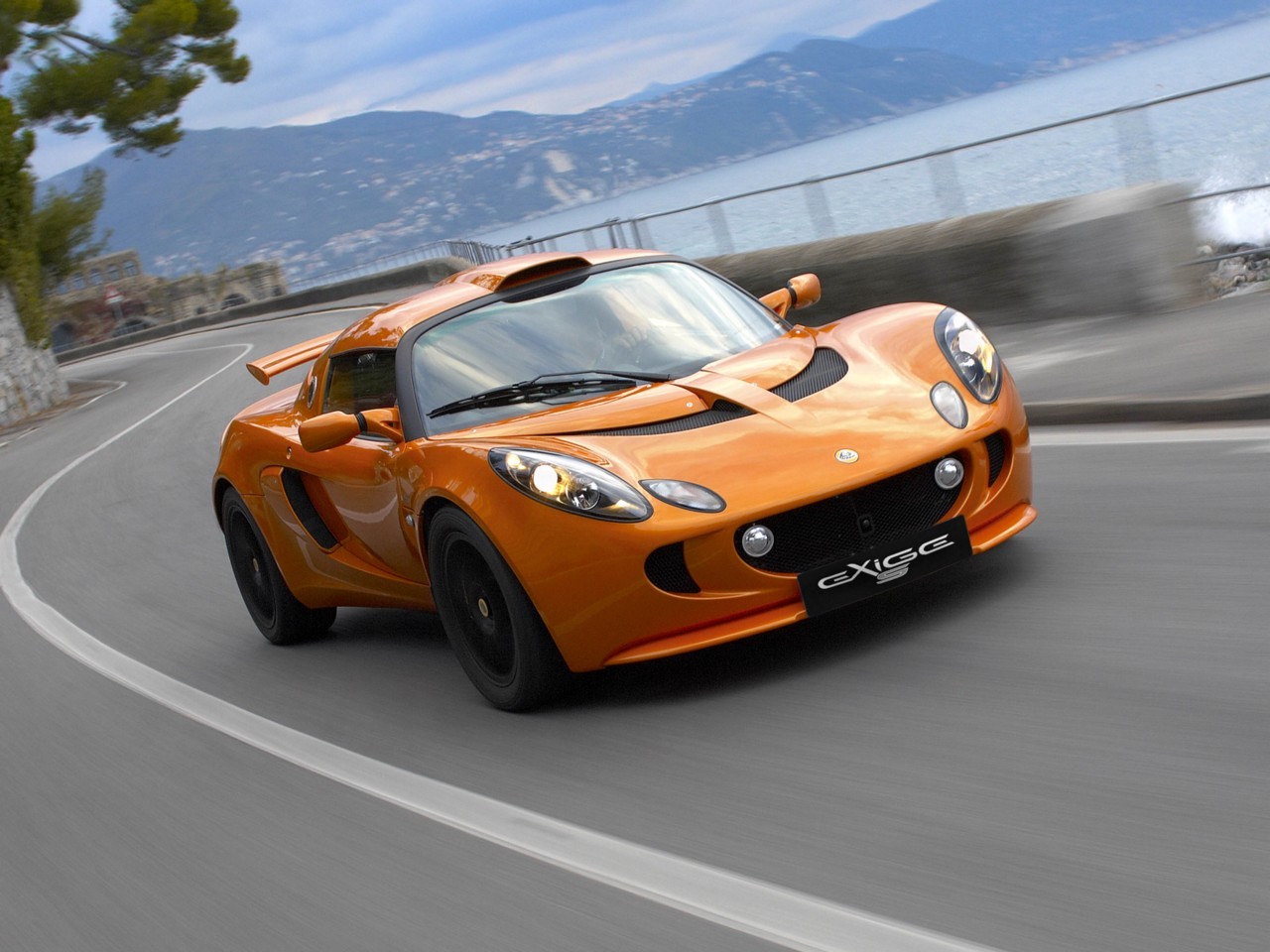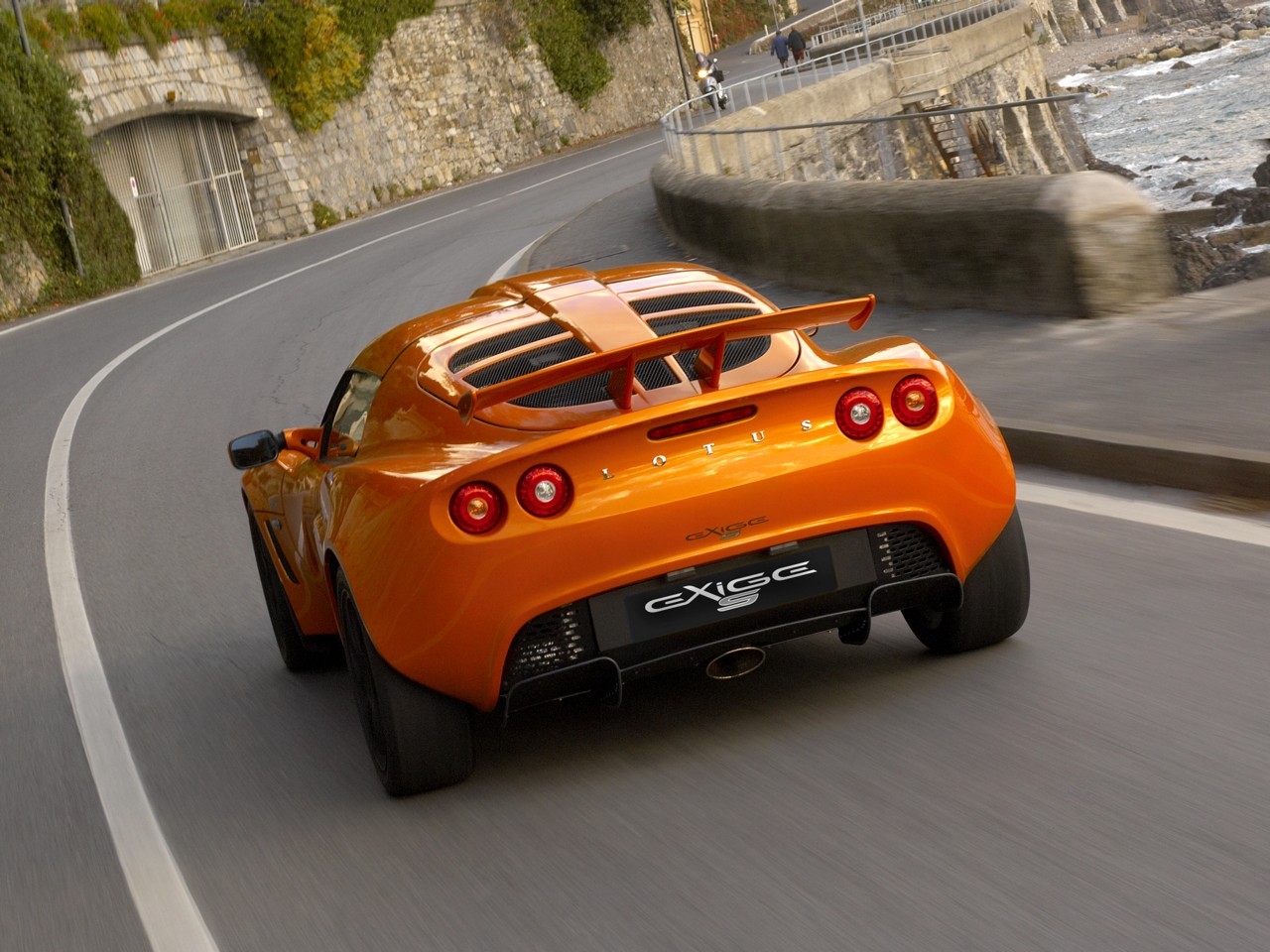
- Lightweight, agile chassis
- Excellent steering feel
- Outstanding dynamics
- Track-oriented design brings shortcomings: cramped and noisy interior, stiff ride, heavy steering for low-speed manoeuvres
- Hopeless rear visibility
- Lacks features of rivals
Overview
Released in April 2004, the Lotus Series II Exige was a mid-engined, two-door coupe. Manufactured in Norfolk, England, the rear-wheel drive Series II Exige was powered by a naturally aspirated 1.8-litre four-cylinder petrol engine that was mated to a six-speed, close-ratio manual transmission with a single-plate dry clutch.
2ZZ-GE Engine
The 1.8-litre Toyota 2ZZ-GE engine had an aluminium block and cylinder head, aluminium silicon cylinder liners, double overhead camshafts (chain-driven), forged steel connecting rods, four valves per cylinder, variable cam-phasing with variable intake and exhaust valve timing with and lift (Toyota’s ‘VVTL-i’) and a compression ratio of 11.5:1.
In August 2006, the Exige was replaced by the supercharged Exige S. Although powered by the same 2ZZ-GE engine, the Exige S added an air-to-air Roots supercharger. From 2007, a Sport 240 variant was available, while limited-run variants consisted of the Cup 260 (2009), S Type 72 (2010) and Scura (2010). The full Series II Exige range is given in the table below.
Development and dimensions
Based on the Series II Elise , the Exige had an epoxy-bonded extruded aluminium chassis with a hand-finished fiberglass bodyshell. Compared to the Elise, however, the Series II Exige was distinguished by its fiberglass hardtop roof with roof scoop, front splitter, rear engine cover and rear spoiler. Compared to its Series I predecessor, the Series II Exige was 5 mm longer (at 3785 mm), 1 mm narrower (1719 mm) and 32 mm lower (1143 mm), though wheelbase length (2300 mm) was unchanged.
Suspension
The Exige had double wishbone suspension front and rear.
| Variant | Years | Engine | Trans. | Peak power | Peak torque |
|---|---|---|---|---|---|
| N/A | 2004-06 | 1.8-litre petrol I4 | 6sp man. | 141 kW at 7800 rpm | 181 Nm at 6800 rpm |
| S | 2006-12 | 1.8-litre super-charged petrol I4 | 6sp man. | 163 kW at 7800 rpm | 215 Nm at 5500 rpm |
| Sport 240 | 2007-09 | 1.8-litre super-charged petrol I4 | 6sp man. | 179 kW at 8000 rpm | 230 Nm at 5500 rpm |
| Cup 260 | 2009 | 1.8-litre super-charged petrol I4 | 6sp man. | 192 kW at 8000 rpm | 236 Nm at 6000 rpm |
| S Type 72 | 2010 | 1.8-litre super-charged petrol I4 | 6sp man. | 179 kW at 8000 rpm | 230 Nm at 5500 rpm |
| Scura | 2010 | 1.8-litre super-charged petrol I4 | 6sp man. | 182 kW at 8000 rpm | 236 Nm at 6000 rpm |
Safety equipment
Standard safety equipment for the Exige included ABS. The Exige S, however, was further equipped with dual front airbags. From August 2011, the Exige S was also fitted with electronic stability control and traction control.
Features: Exige
Features for the standard Exige initially included alloy wheels, a four speaker Blaupunkt sound system with CD player, air conditioning, contoured sports seats, front driving lights, leather-wrapped steering wheel, remote central locking, an alarm and immobiliser.
Features: Exige S
Compared to the standard Exige, the Exige S was equipped with Yokohama Advan A048 competition tyres (195/50 R16s at the front and 225/45 R17s at the rear), MP3-compatibility, cloth-trimmed ProBax racing seats, Momo steering wheel and push-button starter. Visually, the Exige S could be identified by its roof-mounted air intake and centre roof scoop.
From August 2011, the Exige S was fitted with an electronic rear differential lock.
Exige Sport 240
Released in October 2007, the Sport 240 variant was based on the Exige S but a redesigned engine management system provided resulted in greater power and torque, which also necessitated a heavy-duty clutch with pressure plate. The Sport 240 was also fitted with a torque-sensing limited-slip differential, driver-controlled traction control system (with eighteen selectable presets), adjustable suspension dampers, an adjustable front sway bar, additional sound insulation and four-piston AP Racing front brake calipers with 308 mm discs and single-piston Brembo rear calipers with 288 mm discs.
Compared to the Exige S, the Sport 240 featured five-spoke forged OZ alloy wheels, black leather sports seats (with orange stitching) and an air conditioning system which automatically switched off under hard acceleration.
May 2008: Exige update
In May 2008, the Exige underwent a minor update, consisting of a soft-touch dashboard, new instrumentation, LCD message panel, gearshift indicator light and a new alarm and immobiliser with a single integrated function key.
September 2009: Exige update
In September 2009, the Exige S underwent another minor update with a restyled front end with larger air intakes and a new aerodynamic splitter. The Exige S was also fitted with a larger, composite rear wing – attached via rear end plates – which increased the stiffness of the rear structure.
Exige Cup 260
In March 2009, the Cup 260 was released. Based on the Exige S, the Cup 260 had a revised engine management system and weighed 38 kg less as carpet, mudflaps, a battery cover, interior mirror, sunvisors and tailgate were omitted. The Cup 260 was fitted with Lotus-specific LTS compound Yokohama A048R tyres, four-piston AP Racing front brake calipers, adjustable dampers and anti-roll bar, a six-point FIA roll cage and sports seats.
The Cup 260 was updated in August 2009 with a lightweight and unpainted carbon chord composite rear wing that was attached via rear end plates. Furthermore, a carbon chord composite air splitter under the front of the vehicle provided additional downforce.
2010 Lotus Exige S Type 72
In April 2010, the S Type 72 variant was released to commemorate the Lotus Type 72 Formula One car. The S Type 72 was fitted with the otherwise optional Sport Pack as standard, which included a T45 steel main roll hoop, Lotus Traction Control, twin oil coolers and an adjustable front anti-roll bar. Visually, the S Type 72 could be identified by its black and gold lightweight wheels and black and gold paint finish with hand-painted gold Type 72 and Exige S logos. Inside, the S Type 72 had black micro fibre ProBax sports seats with gold stitching.
2010 Lotus Exige Scura
In April 2010, the Scura variant was also released. Compared to the Exige S, the Scura was fitted with Eibach springs with variable height platforms, black forged wheels and Yokohama A048 LTS tyres. Furthermore, the Scura was fitted with the racing Exige GT3’s electronic launch control, variable slip traction control and track-style Ohlins two-way adjustable dampers. Inside, the seats and centre console were made from carbon-fibre, while the handbrake and gearknob were finished in black anodized metal.
The Scura could be identified by its black matt pain finish with high-gloss stripes running the length of the car, while the front splitter, oil-cooler inlet vanes, side air scoops and rear spoiler were all made from carbon fibre.
Related links
